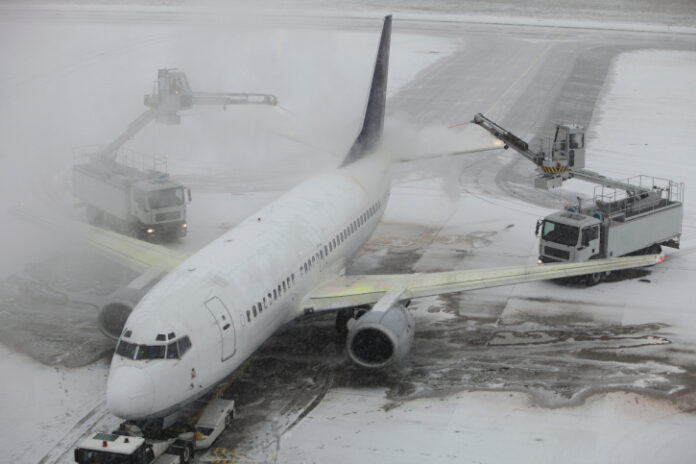Far more airliner near-misses than the Federal Aviation Administration (FAA) acknowledged, and they are due to outdated Air Traffic Control system.
by Robert Poole
A small flurry of near-collisions on or near airport runways in the first four months of this year attracted media coverage but has had no apparent effect on the Federal Aviation Administration (FAA) reauthorization bills working their way through the House and Senate. But a lengthy article in The New York Times may get lawmakers’ attention. “Airline Close Calls Happen Far More Often than Previously Known,” by Sydney Ember and Emily Steel appeared on Aug. 21, 2023.
The Times reporters managed to gain access to federal databases not generally available to journalists or the public. In particular, they were able to review a NASA database of confidential safety reports filed by cockpit crews and air traffic controllers. In the interests of safety, making the disclosure of mistakes is not held against those reporting the incidents.
The number of reports in this database has doubled over the past decade, but the reporters note that it’s not possible to tell if this is because of more people reporting or more actual incidents. For the most recent year, there were more than 300 accounts of near collisions involving commercial airlines. These incidents include both runway incursions at airports and near-misses during flights at various altitudes.
The report identifies two main factors responsible for these incidents. One is that only 43 U.S. commercial airports have automated runway-incursion detection systems, known as ASDE-X or ASSC. Both use surface movement radar (SMR), multilateration, and ADS-B and send alerts to air traffic controllers about potential collisions between aircraft or between aircraft and ground vehicles.
Despite recommendations from the National Transportation Safety Board to equip many more airports, the FAA has added none since 2017. Although this is a valid point, some of the runway incursions reported in the Times article took place at ASDE-X airports (such as Boston, Denver, Ft. Lauderdale, New York’s John F. Kennedy, Miami, and Phoenix) and others took place at non-equipped airports such as Austin, Burbank, and Tampa.
The second, and more-urgent problem, is the egregious shortage of fully-trained controllers in FAA facilities, which I discussed in the lead article in the July 2023 issue of this newsletter. Drawing on both the recent Department of Transportation (DOT) Inspector General report (AV2023035) and interviews with air traffic controllers, the Times article uses graphics to show how grossly understaffed with fully-trained controllers are FAA towers, TRACONs, and high-altitude centers.
Over the past decade, the number of fully-trained controllers has shrunk by 10%, while air traffic has increased by 5% (and would have increased a lot more but for the COVID-19 pandemic). Besides the shortfall in controllers, especially at busier facilities, the article also discusses the extensive use of six-day workweeks and the still-used shift called “the rattler,” which leads to sleep dysfunction.
For all the good work it has done to shed a national spotlight on this important growing safety problem, the article does not attempt to explain why: Why has the FAA not installed ASDE-X at more airports? Why has FAA failed to obtain enough funding to recruit and train air traffic controllers faster than it is losing them via burnout and retirement?
Like other tax-funded federal agencies, FAA does not propose budgets that would cover the costs of what it really needs. Each component of the U.S. Department of Transportation must submit its proposed budget for review by the White House Office of Management Budget (OMB), and a wise transportation secretary and a wise FAA administrator do not propose years’ worth of large budget increases that would be disallowed by OMB because they could not be done without an increase in aviation excise taxes, which is apparently taboo. So FAA generally gets a bit more funding each year, but not enough for a large, sustained increase in air traffic controller hiring or for the acquisition of a hundred more ASDE-X systems.
What kind of public utility—whether investor-owned or government-owned—would make such short-sighted decisions? This is why developed nations around the world have been separating their air traffic control (ATC) systems from their transport ministries, enabling them to become self-sufficient from ATC charges paid by their customers and able to issue revenue bonds to finance large capital improvements.
New Zealand began this trend in 1987, and more than 60 countries have followed suit. During the Clinton administration, Vice President Al Gore’s reinventing government project proposed adapting the New Zealand model, and then-DOT Secretary Federico Pena funded a two-volume study making the case for converting our air traffic control system to a customer-funded utility.
The idea was raised again during the Obama and Trump administrations, with detailed analyses from the Business Roundtable and the Eno Center for Transportation. In both cases, defenders of the status quo prevailed. And so here we are, living with the safety consequences of an obsolete model for air traffic control.
Originally published by Reason Foundation. Republished with permission.
For more great content from Budget & Tax News.











